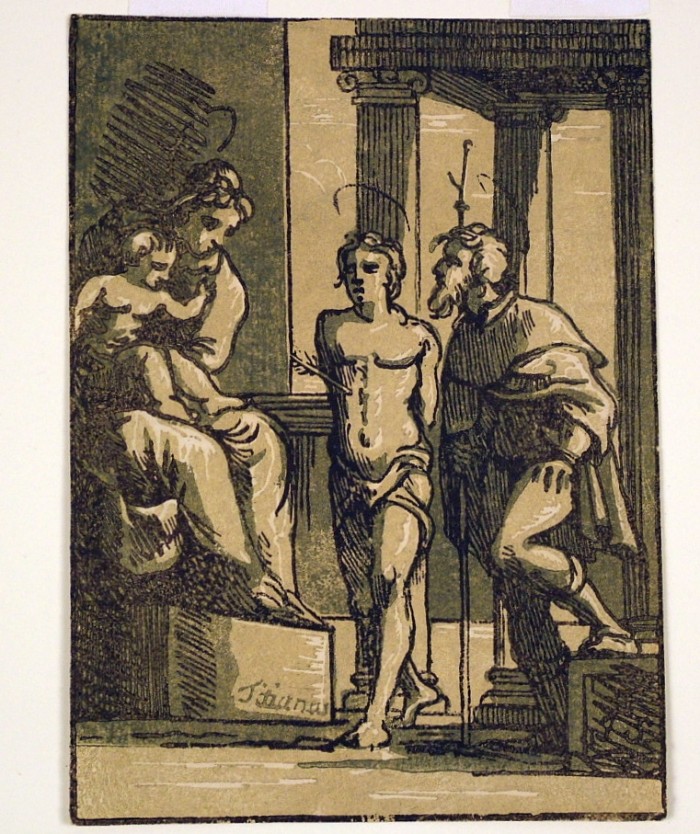St. Sebastian and St. Roch before the Virgin and Child (after Titian)

John Skippe (1742-1811), St. Sebastian and St. Roch before the Virgin and Child (after Titian), chiaroscuro woodcut, c. 1783. [inscribed Titianus lower center, initials in box lower right in the plate]. In good condition, trimmed just at or within the printed borderline, not affixed to a folio sheet, on laid paper, 6 x 4 1/4 inches.
A fine impression, printed in three blocks (tan, greenish grey, dark brown).
Provenance: ex Collection Mr. and Mrs. Percy Simmons, also with the collector’s mark RE in a circle verso (not located in Lugt).
Exhibited: Beyond Black and White: Chiaroscuro Prints from Indiana Collections, Indiana University Art Museum (1989); Indianapolis Museum of Art (1990). Number 53 in the catalogue of the exhibition.
Skippe was often inaccurate when attributing the drawings in his collection to great artists; in this case the attribution to Titian has been re-assigned by Popham to the famed Dominico Campagnola, a sixteenth century Venetian painter influenced by Titian. The drawing was in reverse of Skippe’s print.
This is one of the few Skippe chiaroscuro prints to employ a key block.
Skippe was a “gentleman antiquarian” who traveled widely, collecting drawings which he later used as the basis for his chiaroscuro woodcuts. His intent was to replicate the Italian manner of Ugo da Carpi, and perhaps even encourage a re-birth of chiaroscuro woodcut printing. His prints were a great success, but the re-birth of the medium was not forthcoming. Skippe was not focused on the commercial possibilities of the medium, sharing his prints only with appreciative connoisseurs and colleagues. He created a number of folios of prints; the number is unknown but they are rare, and were of varying sizes. In the United States there are two folios at the Yale Center for British Art (one of 31 prints, the other containing 20); another folio of 42 is at the Cincinnati Museum of Art, and finally a folio of 28 is at the University of Chicago.